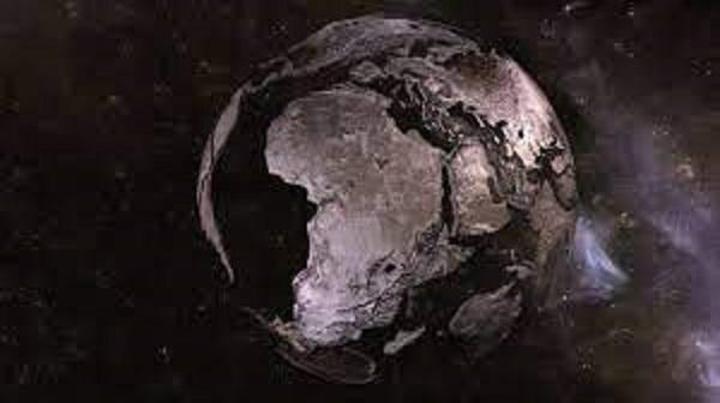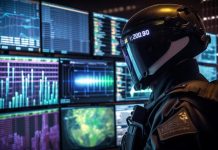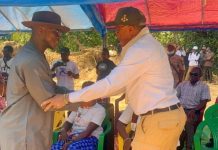Africa-Press – Liberia. In the wake of the docking of Rainbow Warrior, a Greenpeace ship in Port-Louis and discussions between environmental activists and the authorities of the Republic of Mauritius on tuna fishing in the Indian Ocean, it would be interesting to look into on the origins of this international association, today rich in an experience of more than 40 years in the preservation and conservation of the marine and terrestrial resources of Planet Earth.
Greenpeace is an independent association which acts for the preservation of our planet. The story begins in 1971. Sixteen thousand people attend a concert to raise funds for a trip to northern Alaska.
Among them, there are Quakers, pacifists, environmentalists and hippies . . . Finally, a group of volunteers and journalists board an old tub and the first “Greenpeace mission” goes to Amchitka Island to denounce nuclear tests.
The action is nonviolent but effective. This is the start of an international movement. Today, Greenpeace exists in around 40 countries and is present on all continents.
The association relies on the support of individuals and foundations to carry out research and lead a campaign against the degradation of the terrestrial and marine environment.
Several volunteers take turns on a ship to denounce, among other things, the atrocities perpetrated against our planet. What matters is the ability to move problems forward and find solutions.
Several volunteers ply the oceans on the Association’s ship, named “Rainbow Warrior”. For Greenpeace, it is fundamental to sensitize populations around the world because the marine and terrestrial environment of humanity is in danger. It is about changing attitudes and behaviors in order to protect the environment.
Among its projects, Greenpeace intends to work for an energy revolution in the context of climate change, to defend the oceans that are subject to monstrous and destructive looting in order to establish a network of marine reserves, to preserve ancient forests and the entire ecosystem that includes them.
depends, maintain peace through disarmament and the elimination of nuclear power, seek alternatives to polluting chemicals, and fight against GMOs while promoting the development of integrated farms.
Around the world, Greenpeace activists are working to achieve the goals set by the association. They represent the strength of movement. Several so-called ordinary people have surprised more than one by going above and beyond to protect our one and irreplaceable planet Earth.
Some of them have experienced prison, physical threats and political persecution. Every member of Greenpeace remains true to the principles of non-violence.
Everyone perseveres to help improve the lot of the planet, through thick and thin. The list of actions taken by Greenpeace volunteers is very long. Let us quote a few dating from 2011. Princes is one of the most famous brands of canned tuna (tuna).
After receiving more than 80,000 emails from Greenpeace supporters, the company agrees to reconsider its methods of work and ultimately gives up fishing which results in the depopulation of sea creatures such as tunas, sharks and rays.
September 2011: Greenpeace research shows that some renowned companies have relocated part of their manufacturing to China. Two factories dump dangerous chemicals into the Yangtze.
Further research shows that customers buy contaminated clothing and become polluters themselves when they wash their newly acquired goods. Thus, following the release of the Greenpeace report, H&M, Adidas, Nike and Puma make a commitment to eliminate toxic chemicals from their distribution chains before 2020.
Greenpeace continues to closely monitor the action plans of these companies. October 2011: Mattel recognizes that the packaging of toys should not be responsible for the massive deforestation of forests and tiger habitat.
The company pledges to increase the amount of recycled paper and use wood certified by the Forest Stewardship Council (FSC). December 2011: TICS are used extensively to send messages to energy producers and ask them to gradually reduce and then stop the use of coal.
Facebook decides to use clean, renewable energy for its centers. Four founding members of Greenpeace Bob Hunter (1941–2005): Visionary, the Canadian pushes others to act and react.
He inspires confidence because he is one of those leaders who are able to push back all limits. With a valiant heart, nothing is impossible. He believes in the weight of words and the shock of photos.
It helps define the spirit of association that crosses the oceans to reach all shores of planet Earth. David McTaggart (1932–2001): He’s practical. He responds to the advertisement sent by the new association Greenpeace and which appears in the newspaper by renaming his sailboat “Greenpeace III”.
And he is embarking on an adventure to counter French nuclear tests. A very small boat faces a military giant . . . The higher you gain, the further you can see.
In 1985, the Greenpeace association owned three boats and carried out 50 campaigns around the world. Dorothy Stowe (1920–2010) and Irving Stowe (1915–1974): Pacifists and activists on the social front, they represent the quiet force.
The couple arrange the meetings and go out of their way to keep everyone more or less on the same page. They put forward the ideas common to all: disarmament and ecology.
The Quakers explain the meaning of “bearing witness” to the group. It is enough to move on a site to express its opposition to a project by its presence.
It is passive, nonviolent resistance. They believe that any citizen is able to act with integrity and determination like Gandhi in defeating extremely powerful forces.
The awareness of having done well is a reward in itself. The Rainbow Warrior Greenpeace members experience one of the Association’s most tragic events on July 10, 1985.
The Rainbow Warrior is in New Zealand to denounce France’s nuclear tests on Mururoa Atoll. An explosion sounded at midnight and the ship was severely shaken.
Greenpeace photographer Fernando Pereira loses his life while trying certain maneuvers on board the ship. Shortly afterwards, then Prime Minister Laurent Fabius announced that the secret agents had a mission: to sink the boat .
For More News And Analysis About Liberia Follow Africa-Press






